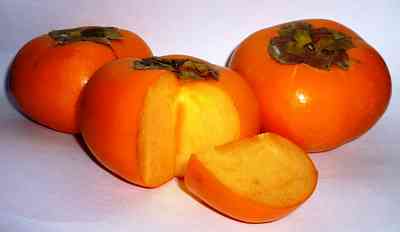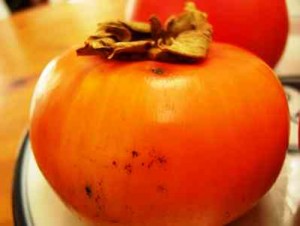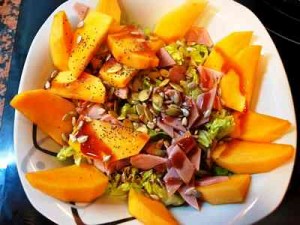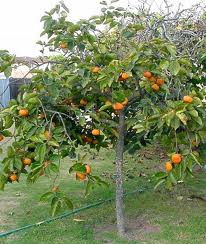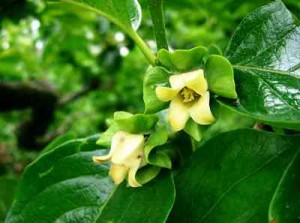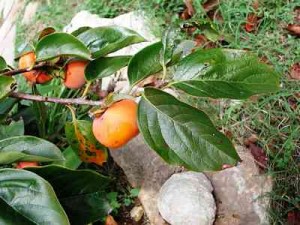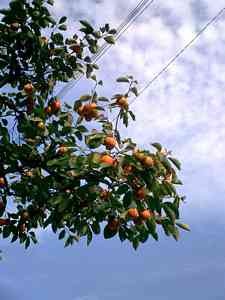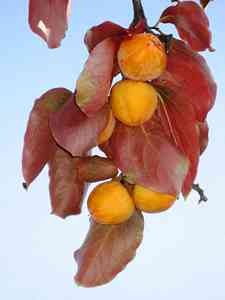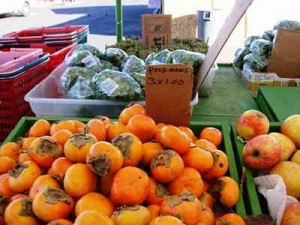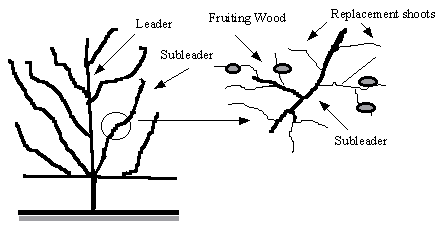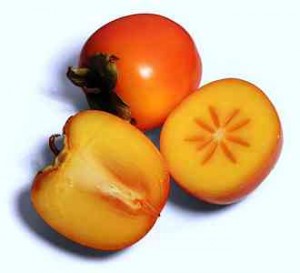Local Persimon Gardening in Spain Persimon (Diospyros kaki)
Persimon has a gorgeous yellowy orange coloured skin that is easily peeled away to reveal the sweet orange flesh. The word Diospyros means “the fruit of the gods” in ancient Greek. Selection of Spanish Gardening guides for you.
The Spanish Gardening Index Page
Persimon (Diospyros kaki)
is a “new” fruit to me. It’s odd – looks more like a tomato than an exotic fruit.
The taste, however, is exquisite. Refreshingly sweet, the stone-free flesh resembles that of mangoes and peaches which is something of a surprise from a thing that so closely resembles a tomato…
The Persimon has a gorgeous yellowy orange coloured skin that is easily peeled away to reveal the sweet orange flesh.
The word Diospyros means “the fruit of the gods” in ancient Greek.
Best eaten fresh, it livens up any fruit salad with its bright colour and sweet taste, but can also be used in a range of recipes ranging from meat based dishes to desserts.
“Persimon” or “KAKI Persimon” is the flavoursome Spanish variety (and registered trade mark) of the traditional, classic Kaki, or Persimmon (with a double ‘m’), which also includes the Sharon fruit.
It is grown in Spain in the Ribera del Xúquer valley in the Valencia region, where it is DO certified. So when growing our own, I guess we will have to call them persimmons with two m´s.
Horse Riding Holidays in Province of Almeria
A selection of Horse Riding Holidays in the Almeria Area TAKE YOUR PICK
===================================
Kaki
The Persimmon tree, also known as Kaki, is native to China and Japan, where it has been cultivated for centuries. It was introduced to Europe and California in the mid-19th century. In Europe, it is commercially grown in Italy, Spain and the south of France, but it is still most common in the Far East.
It is a multi-trunked or single-stemmed deciduous tree reaching a size of up to ten meters (30 ft.). The 2-2.5 cm wide flowers appear in the spring.
Trees are typically either male or female, but some produce both types of flowers. Furthermore, the sexual expression of a tree may vary from year to year.
It is a handsome ornamental with drooping leaves and branches that give it a languid, rather tropical appearance.
FRUIT:
Persimmon trees typically do not bear until they are 3 to 6 years old. There are many varieties of persimmon fruits depending on the country they are grown in, but they are basically divided into two categories:
Astringent persimmons must be jelly soft before they are fit to eat, but if you leave them on the tree to soften and improve in quality, you will probably lose many fruits to the birds.
So harvest when they are hard but fully coloured – they will ripen off the tree if stored at room temperature (and even quicker if they are placed in a plastic bag, together with an apple). Freezing the fruit overnight and then thawing softens the fruit and also removes the astringency.
Non-astringent persimmons: This variant of persimmon usually has seeds inside while the outside is firm in nature. A non-astringent persimmon can be eaten when it is crisp as an apple.
Non-astringent persimmons are ready to harvest when they are fully coloured, but for best flavour allow them to soften slightly after harvest. Even though the fruit is relatively hard when harvested, it will bruise easily, so handle with care.
The non-astringent variety of persimmon has a crispy feel to it while the astringent variety is famous for its soft pulpy nature.
PERSIMON CULTURE
Location: Persimmons do best in areas that have moderate winters and relatively mild summers. Full sun with some air movement is recommended although they will tolerate some partial shade.
Soil: Persimmons can withstand a wide range of conditions as long as the soil is not overly salty, but does best in deep, well drained loam.
A pH range of 6.5 to 7.5 is preferred. The tree has a strong tap root which may mean digging a deeper hole than usual when planting.
Irrigation: Persimmon trees will withstand short periods of drought, but the fruit will be larger and of higher quality with regular watering. Extreme drought will cause the leaves and fruit to drop prematurely.
Fertilization:
Most trees do well with a minimum of fertilizing. Excess nitrogen can cause fruit drop.
If mature leaves are not deep green and shoot growth is less than a foot per year, apply a balanced fertilizer such as a 10-10-10.
Spread the fertilizer evenly under the canopy in late winter or early spring.
Irrigation: Persimmon trees will withstand short periods of drought, but the fruit will be larger and of higher quality with regular watering.
Extreme drought will cause the leaves and fruit to drop prematurely.
Fertilization: Most trees do well with a minimum of fertilizing. Excess nitrogen can cause fruit drop.
If mature leaves are not deep green and shoot growth is less than a foot per year, apply a balanced fertilizer such as a 10-10-10. Spread the fertilizer evenly under the canopy in late winter or early spring.
Pruning: Prune persimmon trees to develop a strong framework of main branches while the tree is young. Otherwise the fruit, which is borne at the tips of the branches, may be too heavy and cause breakage.
Hedge
Even though the trees grow well on their own, persimmons can be pruned heavily as a hedge, as a screen, or to control size. They even make a nice espalier.
In China, persimmon has been cultivated since time immemorial and is considered to have four virtues: it lives long, it gives a large area of shade, it is used by the birds as a nesting place, and it is not attacked by pests.
The location of fruiting and replacement wood on a Ruakura ‘Y’.
As with all fruit, persimmons have plenty of nutritional and health benefits.
Not only do persimmons have twice as much fibre as an apple, they also contain high levels of vitamin A and C, antioxidants, calcium, potassium, iron and magnesium.
The Japanese and Chinese credit the persimmon with being able to lower blood pressure, reducing the risk of clogging in the arteries, and often use them to treat the effects of a stroke.
And if all this is not enough to convince you to try one, the fruit is believed to be an alternative hangover cure.
Drinking persimmon juice is widely believed to lower the density of alcohol in the blood. What a splendid way to start the “morning after”…
Marc Vijverberg
Everything for your garden!!!
Marc Vijverberg and Gurli Jakobsen
638 180 284
659 880 444
Guardamar del Segura
46,50,51,8,36. Optimised March 14 P86 W90
The Persimon has a gorgeous yellowy orange coloured skin that is easily peeled away to reveal the sweet orange flesh. The word Diospyros means “the fruit of the gods” in ancient Greek. persimon.
How about a Safari

THIS IS WHERE YOU MIGHT Discover that SPECIAL wildlife and nature holiday on a once in a lifetime Safari Tour in places such as Africa & the Middle East, The Americas & Caribbean, OR Asia & Oceania.
Gardening in Spain Index
Spanish Desserts
Spain info also lists the Local Hot Water Spas many of them dating back to Roman times.
Optimised July 10 H 69 Dec 5 Dec 21 Persimon 13 H97 May 2 OCT 6 H 69 P 97 H88 P 97 FK 100 F
146 15,889 31 DEC
Spain Info persimon. San Francisco De Asis, Urb Marina, San Fulgencio, 03177, Alicante, Spain
38n21, 0w29.
Site Disclaimer
Disclaimer: Whilst every effort has been made to provide accurate information, no liability will be accepted for misinterpretation, misrepresentation, errors or omissions - the information provided by our Websites is for use as a guide only and is issued in good faith as information..
All photographs images and FILM material is subject to the understanding that as they are in the public domain they can be used and shared as seen to be appropriate and unless showing a sign that they are covered by copyright law. This also covers Social media operations.
1999---2025
